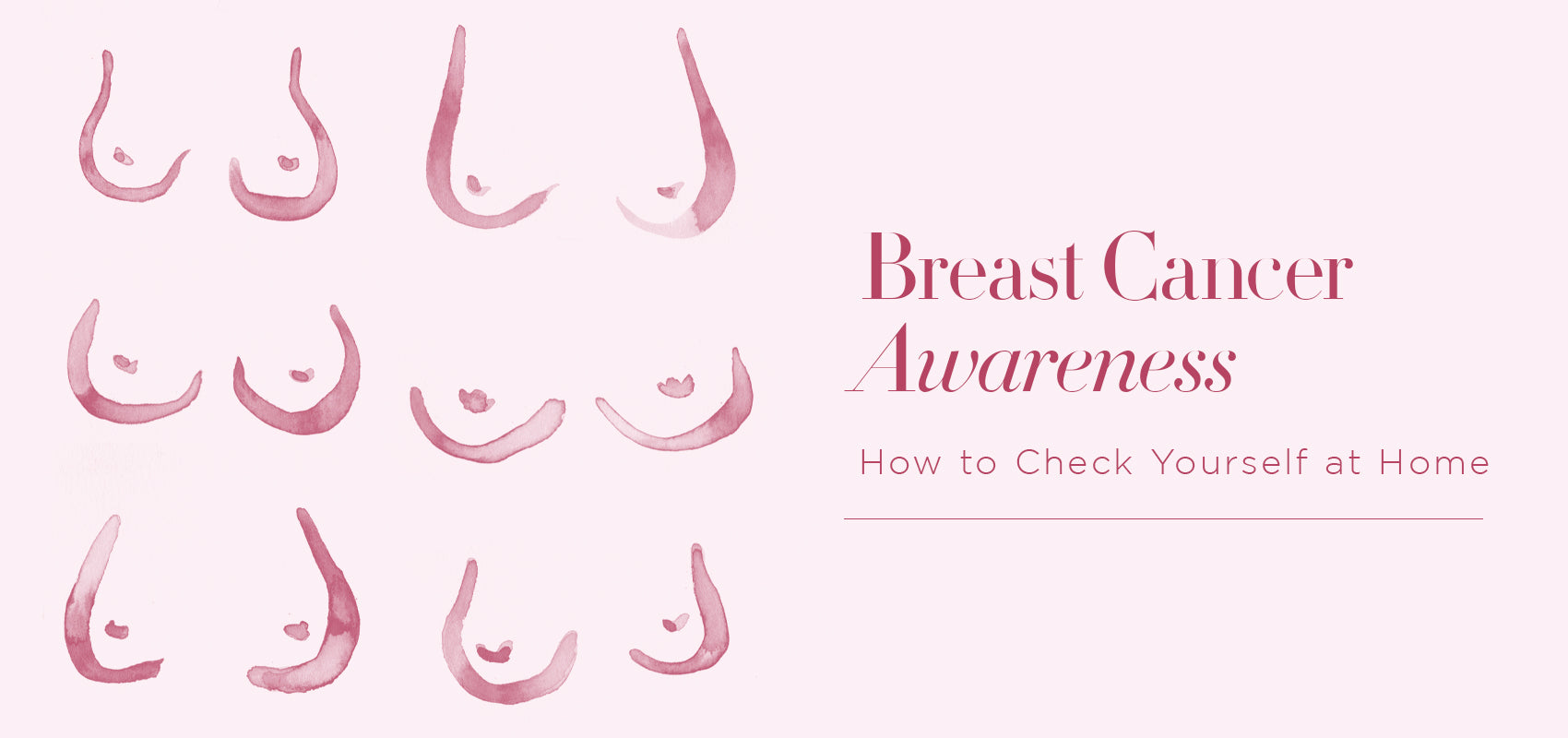
Breast Cancer Awareness: How to Check Yourself at Home
Take your health into your own hands (literally) with our simple guide to at-home breast exams. Because October is Breast Cancer Awareness Month, Journelle wants to remind you just how important this simple act of self-care can be – it might even save your life! The truth is, 1 in 8 women in the United States will be diagnosed with breast cancer. Breast health is a topic that should be a priority for every woman. Regular self-exams, in addition to clinical screenings, mammograms, and thermography scans, play a crucial role in early detection of breast cancer. Performing a monthly at-home self-exam is an easy way to stay in tune with your own body and stay ahead of any possible signs or symptoms.

Why Perform an At-Home Breast Exam?
Breast self-exams serve as an important first line of defense against breast cancer. Detecting changes in your breasts early can lead to quicker diagnosis and better treatment outcomes if a problem is identified. Although breast self-exams are not a substitute for regular clinical care, they can complement these screenings and help you become proactive about your breast health.

When to Perform an At-Home Breast Exam
You can perform breast self-exams at any time, but it's a good idea to make it a regular part of your monthly self-care routine. Many healthcare professionals recommend doing the exam about a week after your period starts, as breasts tend to be less tender and swollen at this time. If you no longer have periods, choose a specific day each month to conduct your breast self-exam.

How to Perform an At-Home Breast Exam
Follow our simple steps to perform your at-home breast exam:
1. Stand in front of a mirror in a well-lit room.
2. Look at your breasts in the mirror with your arms at your sides. Check for any changes in size, shape, or color. Look for dimpling, puckering, or any unusual skin changes. Also, observe your nipples for any discharge or inversion.
3. Raise your arms overhead and observe your breasts in the mirror again. Check for the same visual changes as in Step 2.
4. Use the pads of your three middle fingers on your left hand to examine your right breast, and vice versa. Apply varying levels of pressure to your breast tissue, starting with light pressure and increasing to firm pressure.
• Begin at your collar bone, working your way down to the outer edge of your breast in a vertical sweeping motion. Move your fingers around your breast, working your way in toward the nipple.
• Make sure to cover the entire breast, including the nipple and areola.
• Pay attention to any lumps, knots, or thickened areas. Take note of their size, shape, and location.
5. Gently squeeze each nipple to check for any unusual discharge. Normal nipple discharge, if any, is typically clear or milky.
6. Repeat the same steps for your other breast while standing in front of the mirror.
7. Next, lie down on your back. This position helps more evenly distribute your breast tissue. Raise your right arm behind your head. Use the same sweeping motion with your left hand to examine your right breast. Then, switch sides and examine your left breast.
8. Finally, don't forget to feel your armpits for any swollen lymph nodes or unusual lumps.

Signs & Symptoms to Look For
During your breast self-exam, keep an eye out for the following:
1. Any new or unusual lumps or masses in the breast.
2. Significant changes in the size or shape of one breast compared to the other.
3. Dimpling, puckering, redness, or any other changes in the skin of the breast.
4. Nipple inversion, unusual discharge, or any other abnormalities.

When to Seek Medical Attention
If you notice any of the following during your breast self-exam, it's important to consult a healthcare professional promptly:
- A new lump or mass in the breast.
- Changes in breast size or shape.
- Unusual skin changes or redness.
- Nipple discharge (especially if it's bloody or only from one breast).
- Persistent breast pain or discomfort.
Remember, most breast lumps are not cancerous, but it's essential to get any changes evaluated by a healthcare provider to rule out any serious issues. Performing an at-home breast exam is a straightforward yet vital practice for maintaining breast health. By becoming familiar with your breasts and regularly monitoring them, you can play an active role in early breast cancer detection. Remember that breast self-exams are not a replacement for clinical care, but they are a valuable addition to your overall self-care routine because your breasts deserve the best.
*This article is for educational purposes only and is intended to offer general information and guidance on performing at-home breast exams. It is not a substitute for professional medical advice, diagnosis, or treatment.









